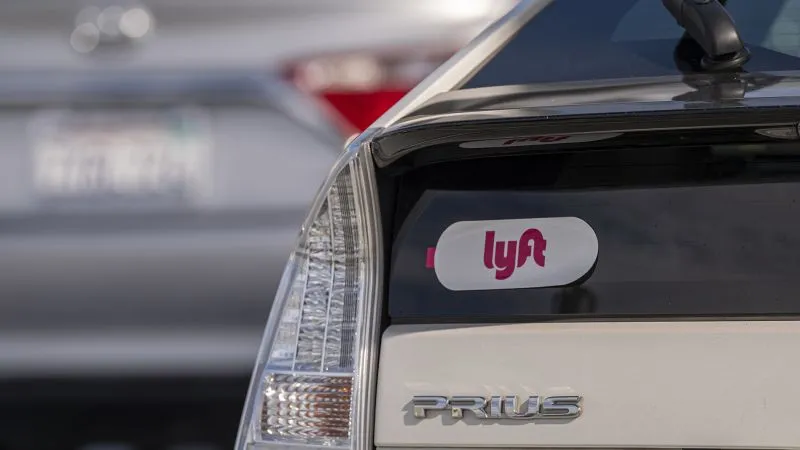- cross-posted to:
- [email protected]
- cross-posted to:
- [email protected]
Lyft is introducing a new feature that lets women and non-binary riders choose a preference to match with drivers of the same gender.
The ride-hailing company said it was a “highly requested feature” in a blog post Tuesday, saying the new feature allows women and non-binary people to “feel that much more confident” in using Lyft and also hopefully encourage more women to sign up to be drivers to access its “flexible earning opportunities.”
The service, called “Women+ Connect,” is rolling out in the coming months. Riders can turn on the option in the Lyft app, however the company warns that it’s not a guarantee that they’ll be matched with a women or non-binary person if one of those people aren’t nearby. Both the riders and drivers will need to opt-in to the feature for it work and riders must chose a gender for it to work.



I understand the reasoning and positivity behind this and I do believe it comes from a really good place, it may even be beneficial to customers, but it is gender discrimination in the workplace, whether it leads to mostly positive outcomes for some people or not.
If your employees bring in different amounts of money because you’ve started to split their available workloads based on gender (especially in an industry where gender has no impact on one’s ability to do the job), you’re now likely to decide that due to this trend over time, to discriminate further, prioritising the more popular genders over others when hiring, and when firing, and when deciding wages.
After all, if one gender brings in less profits consistently than the others - because they’re stifled by company policy - why pay them as much? It makes business sense to pay them what they’re worth, and they’re measurably worth less than the other genders, now.
It’s a slippery slope. Well intentioned, but damages equality in the workplace.
Agreed. I 100% understand the rationale, but it has troubling implications. It only takes the one bad guy, but there are 25 other guys driving that night who would either be friendly or happily ignore you the whole ride.
I’d be interested in reading a breakdown of riders and drivers by gender in some representative areas. What I see this doing is, first yes, giving women and non-binary people an increased sense of safety (which I want to stress is still extremely important). But what I also see is an overall decline in service quality for women and non-binary people. Anecdote, not data, but I’ve used Lyft hundreds of times over the years in different cities. I’ve been picked up by maybe 3 people who weren’t [presumably, I didn’t ask] male identifying. On top of this, there is the possibility of certain genders earning more purely on the basis of gender. Remember - this is a bad thing for gender equality.
Something that might be better is an opt-in program with enhanced background checks, mandatory cab cameras designed to be difficult for your average person to fuck with some system for mandatory upload/secure storage of the footage, and other stuff along these lines. Do all these, regardless of gender, and you get a Secure Ride badge. The difficulty is the process and the knowledge you are under MUCH closer scrutiny. The prize is (potentially) access to a bigger piece of that that day’s possible revenue.
I don’t think the above is perfect, but they’re steps towards a better system not based on gender lines among contractors.
Now, if they were treated like honest to god employees, this kind of thing might be easier to implement. Food for thought, Lyft.
Edit: Another thing that I think would be useful in general is a safety rating system on top of the other metrics. Have users provide anonymized data visible on the driver’s profile about how safe they felt their ride was in general. Though admittedly I can see ways this could be abused or made un-useful. But I’ve personally been in situations where I did NOT feel safe, and would have rated them poorly in this area - but otherwise they got me home in one piece, and the reason I felt they were unsafe was they busted their ass all day and were almost nodding off.
In this situation, knowing how ratings play into Lyft and thinking about causes, my rating did not accurately reflect my actual sense of safety. An anonymous safety rating option, with comment, would have been appreciated.
I stopped reading this novel when you claimed you’ve had hundreds of rides but 3 women drivers. That’s not very believable. I’d say 20-30% of my drivers have been female, out of dozens of rides.
I’ve taken probably over 100 Uber/Lyft rides and have never been picked up by someone who presents as a woman. It’s definitely region specific.
This is why I would be interested in a user and driver breakdown across different areas. My anecdote is just that, and could be a function of driver demographics where I am v. where you are (or just a quirk of probability).
Not American so cultures will differ, but I’ve had exactly one female Bolt driver out of my ~40-50 rides. I don’t know if I’ve ever had a female food courier because I don’t always get to the door before they leave. Haven’t seen one though (I mean I’ve seen them around town - just haven’t been delivered to by one).
No idea why it’s like that. Maybe it’s because women are significantly more likely than men to acquire advanced degrees in my country so they don’t need to do gig work as their main source of income? Maybe women just don’t feel safe doing it?